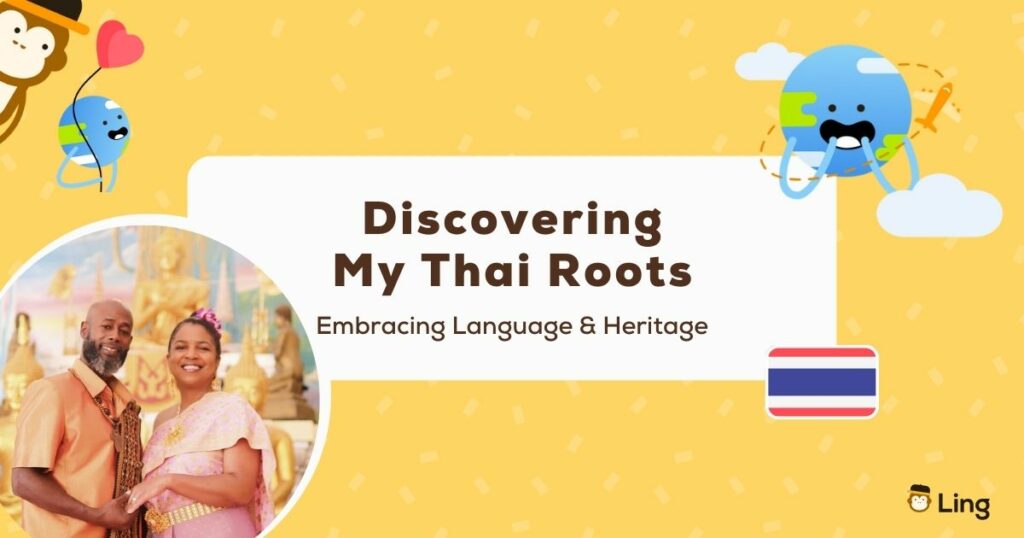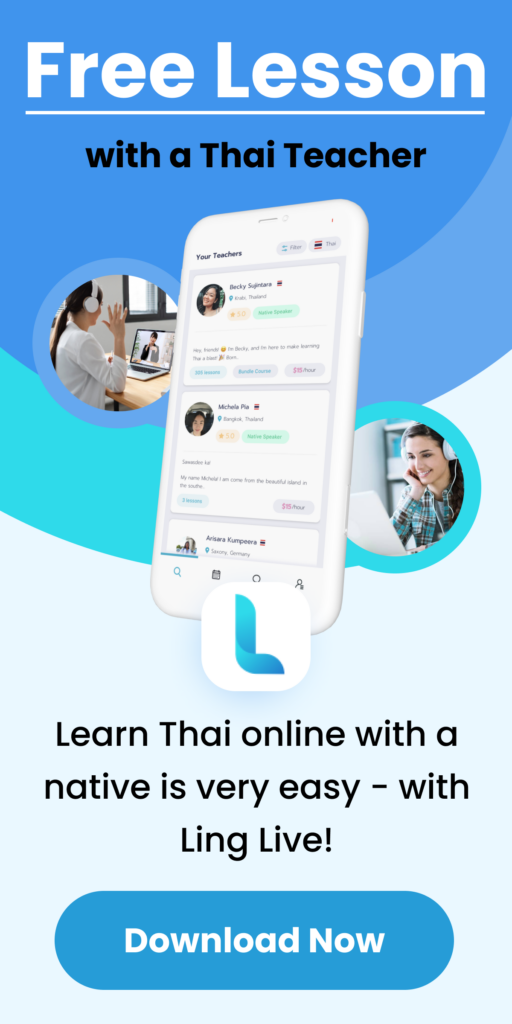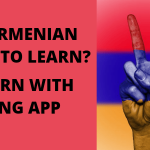As we continued learning from our users’ experiences, we enjoyed chatting with Esther Whitsett. She’s been learning Thai to better connect with her Thai heritage and relatives, and she told us all about her journey with this marvelous yet challenging language.
While talking to her for another episode of our podcast, we learned that Esther’s journey is one of connecting with a culture that’s hers but that remained out of reach because of the language barrier. We heard how she found motivation to better understand her family and overcame the struggles along the way.
In this article, you’ll see how learning the Thai language became her bridge to connecting not only with her roots but also with her relatives. She told us about her relationship with the language, with some interesting tips and anecdotes along the way. What’s more, we were happy to hear how the Ling app has lent a hand to her progress.
So, join us as we delve into her narrative, a journey that beautifully illustrates the power of language in understanding one’s roots and the importance of not giving up when motivation runs low.
Embracing The Thai Heritage Through Language
Born and raised in the US, Esther grew up in Washington, DC. The regular American lifestyle surrounded her, but her heart had a deep connection to Thailand, her mother’s homeland.
Her journey with the Thai language started at a very young age. When she was just a toddler, her mom took her to the country, and she returned speaking Thai instead of English! Unfortunately, the language wasn’t spoken in her household, so all those Thai words started fading away when they returned to the US.
Later on, while living in Melbourne, Florida, her mother was very active in the Thai community, which motivated Esther to try to learn Thai. She tells us she had lessons with one of her mother’s friends but struggled and couldn’t pick up the language.
That all changed when her sister (born and raised in Thailand) moved to the US. Esther now had a lot of family around her, and the Thai language was used regularly, which became one of the primary motivators for her to truly learn it. She wanted to understand what her family members were discussing around her instead of just picking up a few phrases here and there.
She has traveled to the country a couple of times since then. The first time was five years ago while still struggling with the language. But on her latest trip, a short time ago for her honeymoon, she found her perseverance in studying had given fruit.
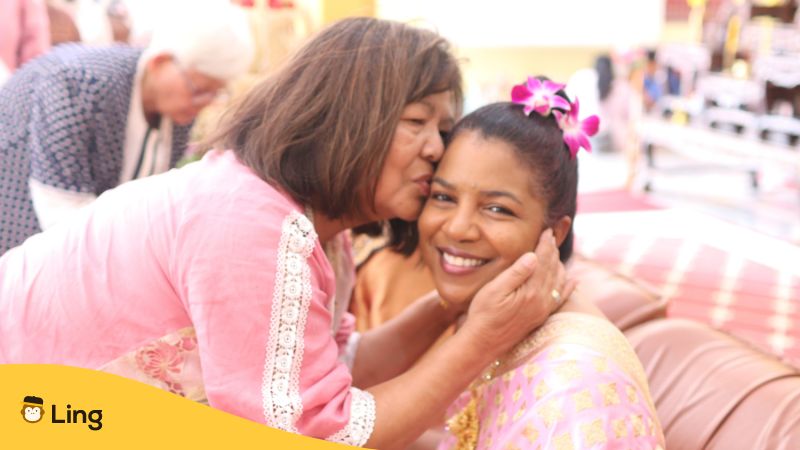
Overcoming The Challenges Of Learning Thai
Embarking on her language journey, Esther faced the unique complexities of Thai. The language was a whole new world compared to her fluency in English and conversational Spanish. Imagine jumping from the straightforwardness of English to the tonal twists and turns of Thai – it’s like learning to dance to an entirely new rhythm.
She particularly struggled with the tonal aspect of the Thai language. She even shared a funny yet telling example of her challenges, telling us about the time she tried to say พี่ (pîi –
meaning elder) but ended up saying ผี (pǐi – ghost) instead!
That mix-up, leading to some light-hearted moments with locals, perfectly illustrates the tonal intricacies of Thai. It’s like hitting a wrong note in a song – the entire meaning changes! This showed her just how different and challenging Thai could be.
Yet, every mispronounced word, every awkward pause, didn’t discourage her. Instead, these hiccups in her language journey fueled her determination to keep going. As such, Esther managed to overcome this challenge and many others.
She told us her trick to getting the tones right: “I had to get uncomfortable. I had to realize that it’s gonna feel kind of weird. […] I kinda had to start mimicking more. Like, mimic and try to sound like the native speakers around me”. At first, she tells us, it feels a bit like you’re mocking and trying to be someone else. But “that’s what you have to do. You have to imitate.” She just had to get used to that.
But each struggle she faced when learning the language was worth it. They brought her closer to understanding not just words and sentences but also herself and her heritage in a more profound way. For Esther, learning Thai was more than just adding another language to her repertoire; it was about reconnecting with a part of her identity and better relating to her family.
Leveraging Technology: Using The Ling App To Learn Thai
The Ling app truly enhanced Esther’s approach to learning Thai. It was her daughter who first pointed her toward this digital tool, and it wasn’t long before Esther realized its value in her language journey. The app did more than just teach Thai; it turned a daunting challenge into an engaging, game-like experience.
She tells us she didn’t find many apps that teach the Thai language. So when discovering the Ling app, which you can download from the Play Store or the App Store, it became her go-to study tool.
Still, at the beginning, her studying wasn’t very consistent. But she took advantage of the app’s short lessons to squeeze in 5 minutes of learning every evening after work. Having kids and a busy schedule meant using any time she had left.
But the app’s design was encouraging. “For me, the app was so much fun because it’s like a game, and you hear the little reward noises when you do something right,” she recounts, “that was good motivation.”
“Another thing about it is it never feels really like a struggle. You’re told new vocabulary and new words, and then they quiz you on it right away, so you get it right, and it’s reinforcing from the very start. So that was better for me, more helpful for me”.
So Esther found the app’s interactive format incredibly effective. It wasn’t just about memorizing words and phrases but about actively participating in the learning process.
But she also recognized the usefulness of pairing this with other sources of learning, like watching TV shows on Netflix, for example. Esther says hearing the language in an actual conversation was very helpful to her, and she’s confident that this approach helped the language sink in.
Still, anyone who’s ever tried to learn a new language, especially one so different from the ones they’re familiar with, can tell you the journey is challenging. And Esther has faced her share of struggles, especially regarding motivation.
For instance, she told us that when getting ready for her honeymoon trip to the country, she was on the verge of giving up. She thought the effort she had put into learning the language wasn’t enough that she could have done more, and there was no point in continuing now.
But she didn’t give up. Right there at the airport, she tells us, she started using the Ling app’s review feature to revise what she had studied so far. “I know this!” she thought, realizing she had indeed absorbed much of the language through her studies, which gave her the confidence she was missing.
As such, for Esther, the Ling app was more than just a language-learning tool; it became a companion and a helping hand on her journey to reconnect with her Thai roots.
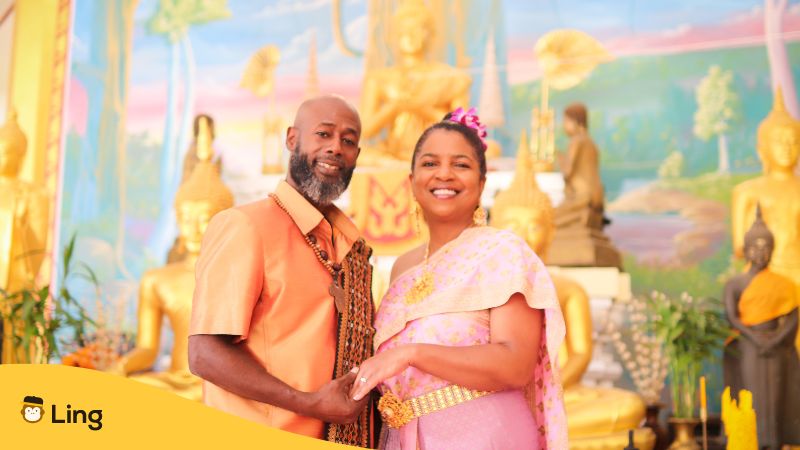
Traveling To Thailand: Cultural Connections Beyond Language
When she finally made the trip for her honeymoon, Esther had been learning the Thai language for quite some time. From those early lessons with her mother’s friend to Zoom lessons with her daughter to eventually discovering the Ling app and incorporating it into her studies, her learning might not have been consistent, but it was persistent.
That’s why her motivation increased significantly after realizing she had improved and could now handle herself in basic conversations.
Proud of this, she told us an anecdote. One day, while on the trip, she and her husband were so tired that they slept until the hotel restaurants had closed. Everybody had already eaten dinner by the time they got up, and they were very hungry, so they had no choice but to go and find some food.
On the way, she told a couple of workers in the elevator that they wanted to get something to eat, in Thai. And they understood her! Eventually, with some help from the manager, they got directions to a place where they could get some food. “It was cool to interact without the help of my family, without the help of someone translating for me,” she says.
Then, when they got to the food stall, she figured out with the waiter what they were going to eat. “But I had enough,” she says proudly, “to just get out there and go navigate and go get some food. So that was nice”.
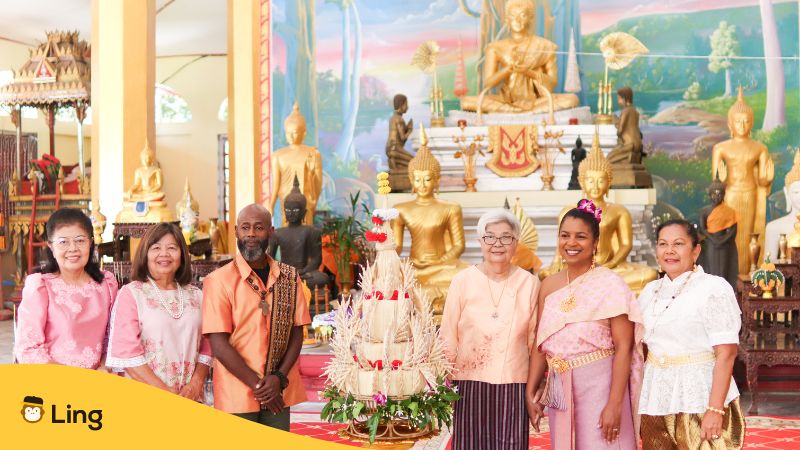
Thai Traditions: The Wedding Ceremony And Good Food
Esther also shared her cherished memories of the beautiful wedding ceremony her Thai family prepared for her and her husband. The celebration immersed her in the richness of the country’s traditions, creating a deeply meaningful and unforgettable experience.
In the Thai wedding ceremony, she saw family members she hadn’t seen in many years. They did the traditional blessings, tying white strings around their wrists and giving them their blessings one by one. She tells us how amazed and blown away they were; it was a truly unforgettable experience.
She was particularly happy to be able to recognize what they were saying in Thai and even interact with some of them in English as well. “It was really nice to interact both ways,” she says.
Food is another aspect that played a significant role in Esther’s cultural reconnection. “Thai food is my favorite food. I’m not just biased,” she says with a laugh, “it is the best food, I think, in all the world.” And we could tell she really loves it, as she had a lot to say about it!
She tells us how they were constantly eating while on the trip. With snacks in the car and stopping for dinner, lunch, and ice cream, food was definitely a special part of their visit to the country. And when we asked her what her favorite Thai dish was, she tells us it’s Pad Mee Korat, or spicy noodles from Korat, encouraging us to try them.
Through her improved language skills, Esther could navigate Thai markets during her trip, order food, and engage with vendors in their native tongue. These interactions weren’t just transactional; they were a gateway into the heart of Thai culture.
The Joy Of Improvement And Recognition
Hearing about Esther’s progress in Thai was genuinely heartwarming. It was more than just mastering a language; it was about her genuinely connecting with her Thai heritage and family.
She told us how, during her trip, some family members who couldn’t understand her on the previous visit now congratulated her on her pronunciation. Her growing vocabulary pleasantly surprised many relatives as well. This recognition from her family validated her hard work and dedication.
But it wasn’t just about the words she could speak; it was about the doors those words opened. Being able to communicate in Thai allowed her to participate more fully in family discussions, understand jokes, and share stories.
Getting this well-deserved recognition from her family was a testament to Esther’s perseverance and love for her heritage. Every new word she learned and every sentence she spoke brought her closer to mastering a language and embracing an integral part of her identity.
Future Aspirations And Continuous Learning
“I think, you know, I could have put in more effort, I probably will. But none of it was wasted. None of the time when I’m like, okay, my progress is going slowly, I need to get better, I need to learn more. Every little bit of effort has been worth it. It’s all come together at some point. It’s all been able to, like, meet somewhere in the middle in my brain and help me.”
Esther’s journey to learn Thai and embrace her heritage is far from over. During our conversation, Esther emphasized how all these experiences had only fueled her desire to learn more.
She also mentioned her eagerness to return to Thailand in the future. Moreover, she’s inspired to pass on this cultural legacy to her daughter, fostering a link to their Thai roots that stretches across generations.
When asked what advice she would give fellow language learners, she’s very encouraging: “Even if you aren’t learning formally in a very structured way, you can learn it little by little. You can learn it at your pace. So you shouldn’t feel limited; you don’t need to give up. You can keep going, and you’ll get better”.
Esther’s story is a powerful journey of cultural reconnection through language learning. It’s about the joy of discovery, the satisfaction of personal achievement, and the fulfillment that comes from connecting with one’s heritage and family on a profound level. Her experience is a beacon of inspiration for anyone embarking on a similar path, showing that the journey itself is as rewarding as the destination.
